Issue Archive
Table of Contents
BLOOD COMMENTARIES
BLOOD SPOTLIGHT
How should we use convalescent plasma therapies for the management of COVID-19?
Clinical Trials & Observations
In this Blood Spotlight, Wood et al provide a succinct, contemporary, insightful review on this controversial topic. They highlight the challenge of conducting trials and applying evidence-based practice during a pandemic.
CLINICAL TRIALS AND OBSERVATIONS
A phase 1 study of inotuzumab ozogamicin in pediatric relapsed/refractory acute lymphoblastic leukemia (ITCC-059 study)
Clinical Trials & Observations
Relapsed and refractory acute lymphoblastic leukemia in children remains a major challenge, even in the era of chimeric antigen receptor (CAR) T-cell therapy. Brivio and colleagues report the results of a phase 1 trial of inotuzumab ozogamicin, defining a recommended phase 2 dose for children and indicating an 85% minimal residual disease–negative complete remission rate at that dose. If confirmed in larger studies, this approach may increase the success of potentially curative CAR T-cell and allogeneic transplantation therapies.
IMMUNOBIOLOGY AND IMMUNOTHERAPY
Rapid single-molecule digital detection of protein biomarkers for continuous monitoring of systemic immune disorders
LYMPHOID NEOPLASIA
MYELOID NEOPLASIA
Modeling and targeting of erythroleukemia by hematopoietic genome editing
Iacobucci et al created a preclinical mouse model of human acute erythroid leukemias using CRISPR/Cas9-mediated multiplexed gene editing of hematopoietic stem cells. After validating its fidelity to human erythroleukemia, they elucidated the interplay between somatic mutations and epigenetic regulation during pathogenesis and identified potential therapeutic targets for treating erythroleukemia.
PLATELETS AND THROMBOPOIESIS
Secreted modular calcium-binding protein 1 binds and activates thrombin to account for platelet hyperreactivity in diabetes
Platelets may be hyperreactive in people with diabetes. Using genetic mouse models and in vitro assays with human platelets, Delgado Lagos and colleagues discovered that the secreted modular calcium-binding protein 1 (SMOC1) expressed by platelets interacts with thrombin to increase its activation and regulate platelet function. They also show that in diabetes, platelets have elevated SMOC1 expression and SMOC1-dependent hyperreactivity, partially explaining the clinical observation and identifying a potential therapeutic target.
RED CELLS, IRON, AND ERYTHROPOIESIS
A natural DNMT1 mutation elevates the fetal hemoglobin level via epigenetic derepression of the γ-globin gene in β-thalassemia
Brief Report
Gong et al report their identification of a germline missense mutation in DNA methyltransferase 1 (DNMT1), a ubiquitously expressed key epigenetic regulator, as 1 cause of hereditary persistence of fetal hemoglobin. In doing so, they uncovered a role of DNMT1 in human erythropoiesis, further deciphered the regulation of γ-globin expression, and potentially identified a new way to regulate globin expression in people with β-hemoglobinopathies.
THROMBOSIS AND HEMOSTASIS
Incidence, risk factors, and outcomes of venous and arterial thromboembolism in immune checkpoint inhibitor therapy
Clinical Trials & Observations
The interplay between the immune system and thrombosis is increasingly recognized, yet the incidence of venous and arterial thrombotic events during immune checkpoint inhibitor therapy has not been well described. Moik and colleagues present a single-center retrospective analysis of the heightened incidence and clinical impact of thrombotic events during immune checkpoint inhibitor therapy of cancer. This first data set to quantify the risk of thrombosis suggests the need for greater attention to this potentially preventable complication during this new era of cancer therapy.
TRANSPLANTATION
The pulmonary metatranscriptome prior to pediatric HCT identifies post-HCT lung injury
Clinical Trials & Observations
LETTER TO BLOOD
IKZF1 alterations predict poor prognosis in adult and pediatric T-ALL
Clinical Trials & Observations
Patient outcomes in T-cell acute lymphoblastic leukemia and lymphoblastic lymphoma (T-ALL/LBL) can be difficult to predict. Simonin et al report deletions and mutations in the gene encoding the transcription factor IKAROS among 1260 children and adults with immature T-ALL/LBL, defining its frequency and, importantly, its association with poor outcome in multivariate models. Pathogenic alterations in IKZF1 now can be added to minimal residual disease detection and the established 4-gene oncogenetic classifier to better predict poor outcomes of T-ALL/LBL.
Minimal residual disease quantification in ovarian tissue collected from patients in complete remission of acute leukemia
Clinical Trials & Observations
BLOOD WORK
-
Cover Image
Cover Image
![issue cover]()
Perivascular and sinusoidal hepatic infiltration of mouse leukemia induced by CRISPR/Cas9 editing of Dnmt3a and Tet2 in hematopoietic stem cells. See the article by Iacobucci et al on page 1628.
- PDF Icon Front MatterFront Matter
- PDF Icon Table of ContentsTable of Contents
- PDF Icon Back MatterBack Matter
- PDF Icon Editorial BoardEditorial Board
Advertisement intended for health care professionals
Email alerts
Advertisement intended for health care professionals


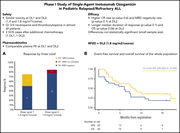
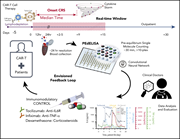
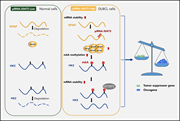






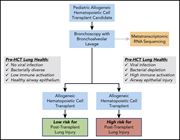
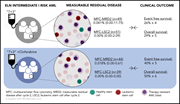

A new era in the treatment of acute lymphoblastic leukemia
Clinical Trials & Observations